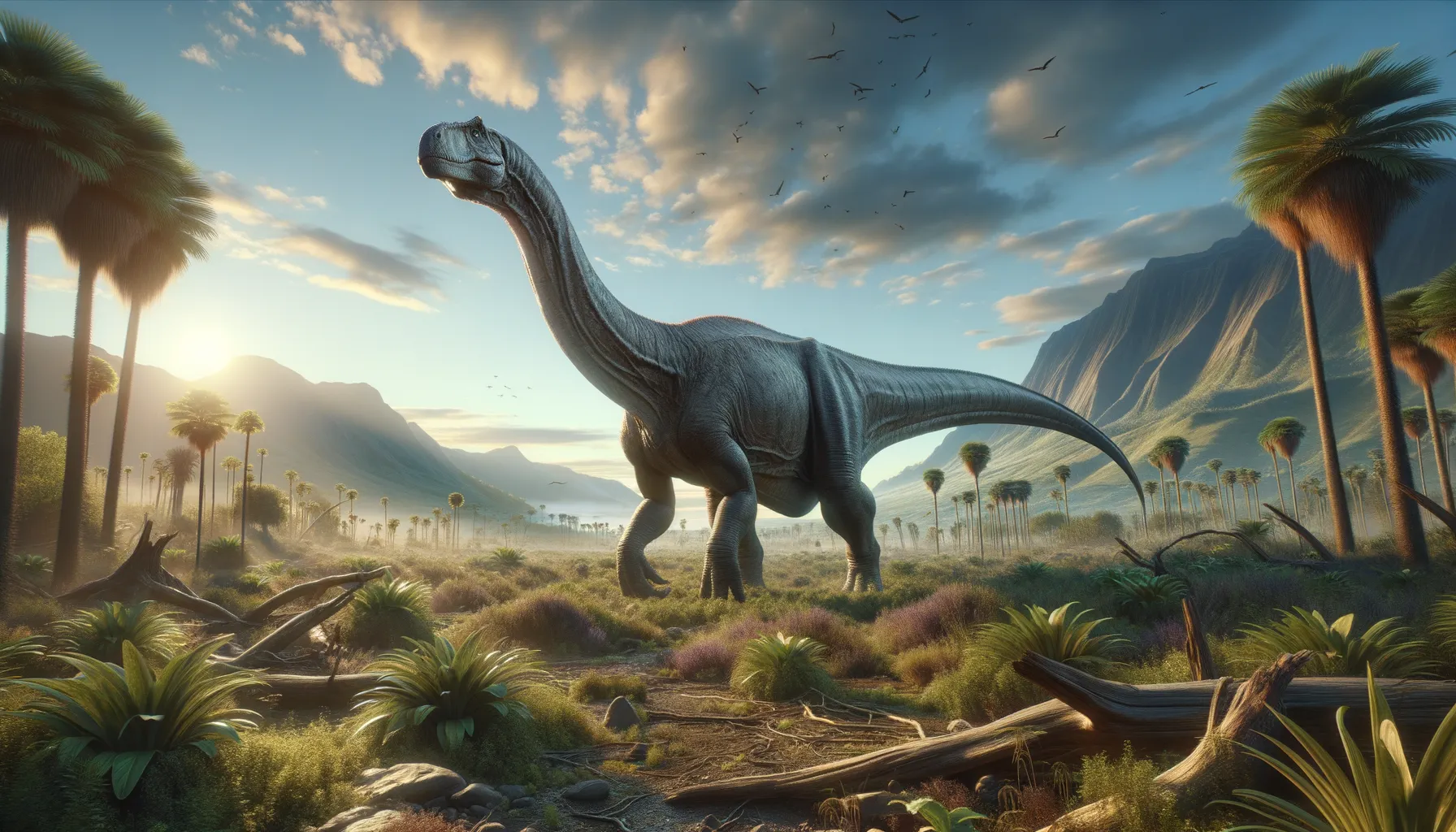
Histriasaurus
Giant of ancient Europe, reaching great heights.
Period
Cretaceous
Length
Measured approximately 15 meters in length.
Height
Its height is inferred to be around 6 to 8 meters.
Weight
Estimated to have weighed several tons.
Histriasaurus was a large sauropod dinosaur that roamed the earth during the early Cretaceous period. Known for its elongated neck and tail, it was a herbivore that grazed on high vegetation. Its fossils were first uncovered in Croatia, providing significant insight into European dinosaur fauna of that time. Although not as famous as some of its relatives, Histriasaurus helps paleontologists understand the diversity and distribution of sauropods.
Diet
Histriasaurus was herbivorous, feeding primarily on plants. Its long neck allowed it to reach tall trees and consume leaves and branches that other animals couldn't access. This helped it avoid competition with other herbivores for food.
Hunting
Histriasaurus did not hunt, as it was a plant-eater. Instead, it would have spent its time foraging for food across its habitat. Its large size likely discouraged predators but did not lead to any active pursuit of other creatures.
Environmental challenges
During the Cretaceous period, Histriasaurus faced environmental challenges like fluctuating climates and periods of drought. These could have impacted the availability of food, requiring it to migrate to more fertile areas. Predation risk from large carnivorous dinosaurs was a threat, though its massive size may have offered some protection. Additionally, it had to navigate the varied terrain of ancient Europe, which might have included both open plains and forested areas.
Speed
Histriasaurus was likely slow-moving, typical of sauropods.
Lifespan
Estimated to live several decades, possibly over 50 years.
First discovery
First discovered in the Istrian region of Croatia in the 1990s.
Fun Facts
- Histriasaurus is a relatively newly discovered dinosaur, first described in 1998.
- It was a herbivorous dinosaur, meaning it ate plants.
- Histriasaurus was a type of sauropod, recognized by its long neck and tail.
- Its fossils have been found in what is now Croatia, indicating it lived in Europe during the Early Jurassic period.
- Histriasaurus is named after the Istria Peninsula where its fossils were discovered.
- This dinosaur is estimated to have measured around 12 meters in length.
- Despite its size, Histriasaurus was likely a peaceful, plant-eating giant moving in herds.
Growth and Development
Histriasaurus, like many sauropods, likely experienced rapid growth during its early years. This fast growth rate helped it reach a size where it was less vulnerable to predators. As it matured, it would have developed the strong neck and tail that are characteristic of sauropods. Its skeleton also adapted to support its massive weight, crucial for a creature its size. Understanding its growth helps researchers interpret its life stages and adaptions.
Habitat
Histriasaurus lived in a habitat that included forested regions and floodplains within what is now Europe. This environment provided ample vegetation for its herbivorous diet. It would've needed access to fresh water sources, like rivers or lakes, both for drinking and perhaps bathing. The variety of landscapes offered a balance of escape from predators and plentiful feeding grounds.
Interaction with other species
As a large herbivore, Histriasaurus likely coexisted with other dinosaurs, both herbivorous and carnivorous. Its size might have deterred many predators, making confrontations less frequent. It likely moved in groups for added protection and social interaction. These dynamics played a significant role in how it shared its environment with contemporaneous species.
Natural lifespan
Histriasaurus likely had a natural lifespan of several decades.
Reproduction
Histriasaurus, like other sauropods, likely laid eggs in nesting sites. These sites were potentially communal, offering some protection against predators. Once hatched, the young would grow quickly to improve their survival chances. Parental care is believed to have been minimal, as juveniles needed to fend for themselves relatively early.
Social behaviour
Histriasaurus might have traveled in groups or herds for increased protection. This social structure helped in finding food and water while deterring predators. Cooperative movement likely assisted in migration to new feeding areas. Overall, group living was an important survival strategy, especially for the young.
Fossil locations
Fossils of Histriasaurus have been discovered primarily in Croatia. These findings confirm its existence in Europe during the Cretaceous period. The region's geological context has provided key information about its living conditions. Efforts continue to uncover more fossils to better understand this fascinating dinosaur.
